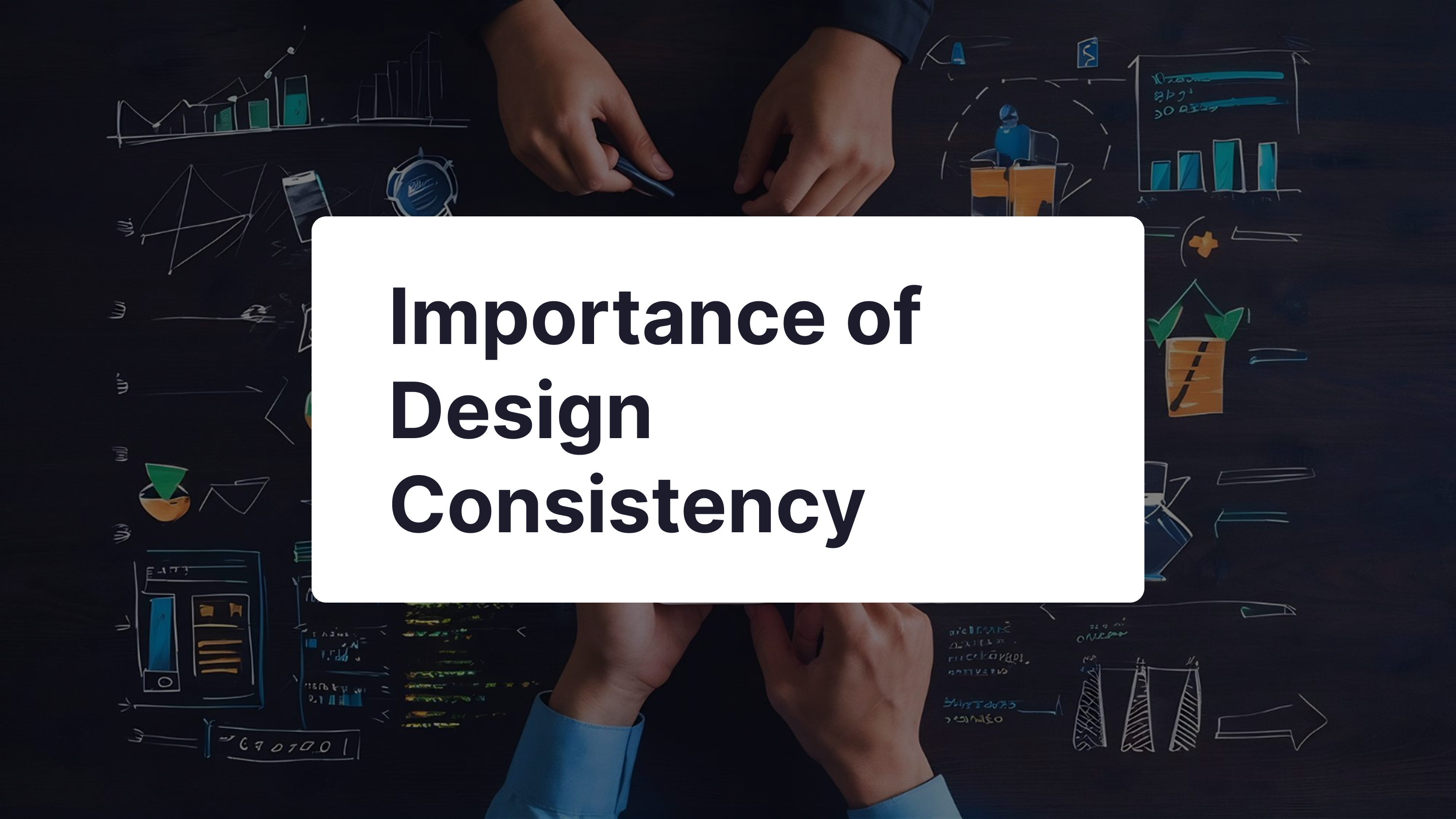Design Consistency: The Key to Intuitive and Scalable UX
 Sandip Bhandari
Sandip Bhandari
In today’s competitive digital landscape, user experience (UX) can make or break a product. While innovation and creativity are celebrated, one principle remains non-negotiable: design consistency. Consistent design reduces friction, builds trust, and scales seamlessly—yet it’s often undervalued. Imagine using an app where buttons change color randomly, navigation shifts across screens, or typography feels disjointed. Confusing, right? This blog explores why consistency is the backbone of intuitive UX.
Understand what is Design Consistency ?
Design consistency means maintaining uniform patterns, components, and behaviors across a product’s interface. It spans:
Visual Consistency: Colors, typography, icons, and spacing.
Functional Consistency: Predictable interactions (e.g., back button, search icon, edit icon…).
Internal Consistency: Alignment within a single product.
External Consistency: Harmony with platform conventions (e.g., iOS vs. Android).
As Jakob Nielsen of the Nielsen Norman Group (NN/g) states, “Consistency is one of the most powerful usability principles.”
Why Consistency Matters
Reduce Cognitive Load : Consistency minimizes the mental effort required to learn an interface. When users encounter familiar patterns—like a magnifying glass icon for search—they focus on tasks, not relearning basics. NN/g’s research shows inconsistent UI increases cognitive load by 50%, leading to frustration and abandonment.
Example: Airbnb’s Redesign In 2016, Airbnb overtake its design system to unify its fragmented ecosystem. By standardizing components like cards, buttons, and filters, they reduced user onboarding time by 30% and boosted conversion rates.
Build Brand Trust : A consistent design looks professional, while mismatched colors and branding can make a product feel untrustworthy.
Example: Google’s Material Design Material Design, launched in 2014, unified Google’s products under a single design language. Its tactile surfaces, bold typography, and meaningful motion created a recognizable brand identity. By 2023, Material Design powered over 1.5 million apps, proving scalability without sacrificing familiarity.
Accelerates Development : Reusable components streamline workflows. Developers spend less time rebuilding elements, while designers focus on solving user’s problems.
Example: IBM's Carbon Design System IBM’s Carbon system standardized UI components for 200+ enterprise products. Development cycles shortened by 40%, and product teams shipped features 2x faster
Enhance Accessibility : Consistency in design ensures predictable navigation, benefiting users with disabilities. WCAG 2.1 emphasizes uniform UI elements for better screen reader and keyboard support. Apple’s VoiceOver, powered by structured UI from HIG, enables seamless interaction. A well-structured, consistent interface enhances usability for all.

Best Practices for Achieving Consistency
Building a Design System : Design systems are the ultimate toolkit for consistency. They include:
Style Guides: Typography, color palettes, iconography.
Component Libraries: Reusable UI elements (buttons, modals).
Pattern Libraries: Templates for common workflows (e.g., onboarding).
Conduct Regular UX Audits : Reviewing designs periodically helps identify inconsistencies before they impact users. NN/g’s Usability Heuristics emphasize consistency and standards as “Users should not have to wonder whether different words, situations, or actions mean the same thing.“
Design Review : Regular design reviews within teams ensure that UI components follow the design system, maintain visual hierarchy, and align with accessibility standards. Reviewing spacing, typography, and interaction consistency helps prevent fragmentation and improves overall user experience.
Cross-Team Alignment : Collaboration between designers, developers, and product teams is key. Tools like Figma, Storybook, and ZeroHeight help bridge gaps and keep everyone aligned on component usage and styling.
Case Studies: Consistency in Action
Microsoft’s Fluent Design System: Unifying Windows, Teams, and Office
Teams saw a 25% reduction in user-reported navigation issues within 6 months.
Office 365 adoption increased by 18% post-update due to smoother cross-app workflows.
Developers shipped features 30% faster with reusable Fluent components.
Spotify’s Global Redesign: Harmonizing Mobile and Desktop
15% increase in cross-device session retention after aligning navigation.
Playlist creation became 40% faster with predictable UI patterns.
Navigation-related support tickets dropped by 22%.
Uber’s Driver App Overhaul: Safety Through Consistency
Trip cancellations decreased by 27% with clearer alerts.
Driver satisfaction scores improved by 33% post-launch.
90% compliance with safety notifications due to consistent design.
Notion’s Template Ecosystem: Scaling with Modular Design
Team workspace adoption grew by 50% year-over-year.
New user onboarding time dropped from 2 hours to 45 minutes.
Enterprises reported 60% faster collaboration with standardized templates.
Conclusion
Design consistency isn’t about stifling creativity—it’s about creating a foundation for innovation. By reducing cognitive load, accelerating development, and fostering inclusivity, consistency becomes a strategic asset.
Happy Designing 👨💻
Subscribe to my newsletter
Read articles from Sandip Bhandari directly inside your inbox. Subscribe to the newsletter, and don't miss out.
Written by

Sandip Bhandari
Sandip Bhandari
Hello Folks, Myself Sandip Bhandari from NEPAL I’m a Product Designer with 2 years of experience designing engaging and user-friendly interfaces for web applications for both desktop and mobile .